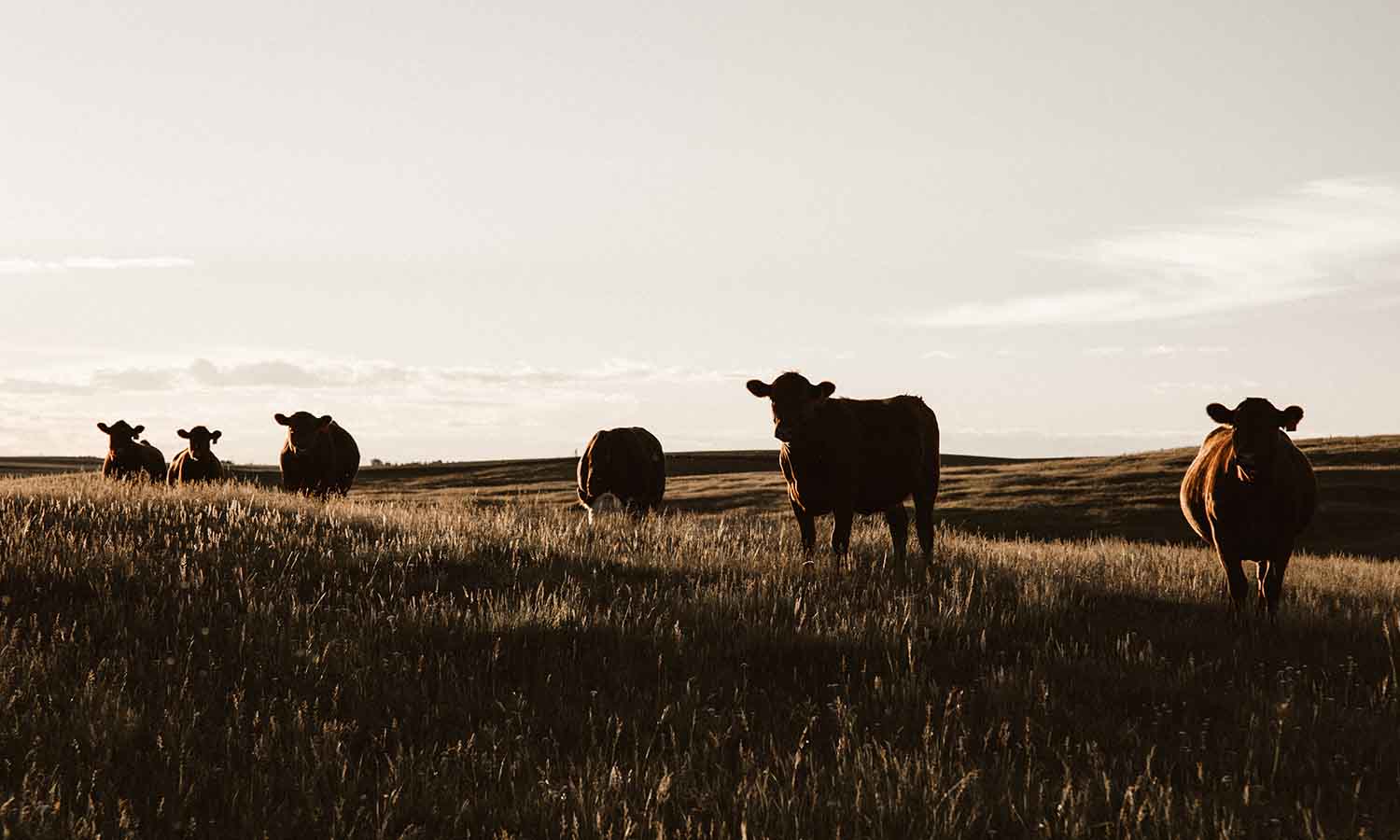Recent heat waves across the Midwest resulted in the overheating and deaths of at least 2,000 cattle in Kansas feedlots. In response, livestock experts are considering climate-resilient strategies to protect producers’ herds.
Temperatures over 37.8 degrees C (100 degrees F) persisted for two days, peaking at 40 degrees C (104 degrees F) in Kansas in recent weeks. The heat waves swept across the southwest region of the state, with the hottest temperatures affecting Haskell County, Kansas’ top cattle-producing county. And with nighttime temperatures hovering around 21.1 degrees C (70 degrees F) — the threshold for heat stress when excess mortality is attributable to heat — cattle found no relief in evenings.
“This is not normal for this area, which typically sees low-humidity and plenty of wind,” Kansas Livestock Association spokeswoman Scarlett Hagins tells Food Tank. Hagins explains that the threat of heat stress is always present during summer months, and that cattle feeders actively take measures to protect their animals.
An animal endures heat stress when it loses its ability to thermoregulate. Temperature, humidity, solar radiation, and wind speed can all impact the animal.
While cattle can typically withstand high temperatures through changing behavior after 26.7 degrees C (80 degrees F), the combination of humidity, heat, and lack of wind exacerbated conditions. According to the University of Missouri, 37.8 degree C (100 degree F) temperature and 80 percent humidity is a lethal combination for cattle.
The cattle in Kansas were market-ready, weighing approximately 680 kilograms and valued at US$2,000 each, according to Hagins.
The Kansas Livestock Association reports that Kansas feedlots support 2.4 million cattle, and is the third largest cattle producing state in the country. While producers incurred financial losses, they were also impacted by the loss of life. “Any loss is a significant and emotional loss to someone raising livestock because they have spent a lot of time caring for that animal,” Hagins tells Food Tank.
Philip Thornton, a flagship leader and Principal Scientist at the International Livestock Institute, tells Food Tank that heat stress can also affect animal welfare even when it doesn’t lead to death. High temperatures can also affect animal behavior, reduce fertility, increase susceptibility to disease, and compromise milk yield and weight gain.
While Hagins says the cattle deaths in Kansas are unusual, heat-related incidents may become more common as global temperatures rise. According to the U.S. Environmental Protection Agency (EPA), multi-day extreme heat events are increasing in intensity and frequency.
“All domesticated livestock species are at risk of heat stress,” Thornton tells Food Tank. “Cattle are generally at high risk of heat stress,” he explains, with European breeds at greater risk than tropical breeds.
In a study published in Global Change Biology, Thornton and his colleagues conclude heat stress will become “a serious challenge in cattle production systems as the current century progresses.” They predict that by the 2050s, some locations may not be able to support extensive livestock production altogether without adaptation measures. This is consequential for milk and meat production.
According to the U.N. Food and Agriculture Organization, livestock supports the livelihoods of at least 1.3 billion people globally. Failing to prepare for a warming climate may jeopardize food security and the livelihoods of poor farming communities.
Lower income countries and tropical regions are particularly vulnerable to temperature changes. Rural areas that depend on subsistence farming and keeping livestock may suffer from diminished labor capacity as the climate warms. “For livestock producers in lower-income countries, heat stress will reduce their incomes, increase the loss of assets, decrease the resilience of their livelihoods, decrease the diversity of their diets, and negatively affect their food security,” Thornton tells Food Tank.
“In parts of Africa, some farmers are switching from cattle to more heat-resilient goats, or from cattle to camels in parts of northern Kenya and southern Ethiopia, for example,” Thornton tells Food Tank.
Thornton says that farmers can also integrate climate-resilient strategies into their modes of production. Improved ventilation and cooling systems may hike up energy costs, but they ultimately work for highly intensive systems. Shading, bathing animals frequently, and solar-powered electric fans are among more cost-effective solutions. Feed additives, including betaine or chromium, also have potential to alleviate some of the effects of heat stress.
Specialty breeding is another solution to consider, Thornton tells Food Tank. “In the longer term, there are prospects for breeding animals with greater heat stress tolerance, also perhaps through cross-breeding programs.” But, he says, these approaches may be costly and can take years.
“It’s clear that heat stress in livestock—and for humans working outdoors, for that matter—will become an increasingly challenging issue for livestock farmers and policy makers to deal with, as the world warms,” Thornton tells Food Tank. He continues, “In the long run, the most effective way to address the challenge is to redouble our collective efforts to reduce greenhouse gas emissions as quickly and as comprehensively as possible.”
Articles like the one you just read are made possible through the generosity of Food Tank members. Can we please count on you to be part of our growing movement? Become a member today by clicking here.
Photo Courtesy of Priscilla Du Preez, Unsplash











